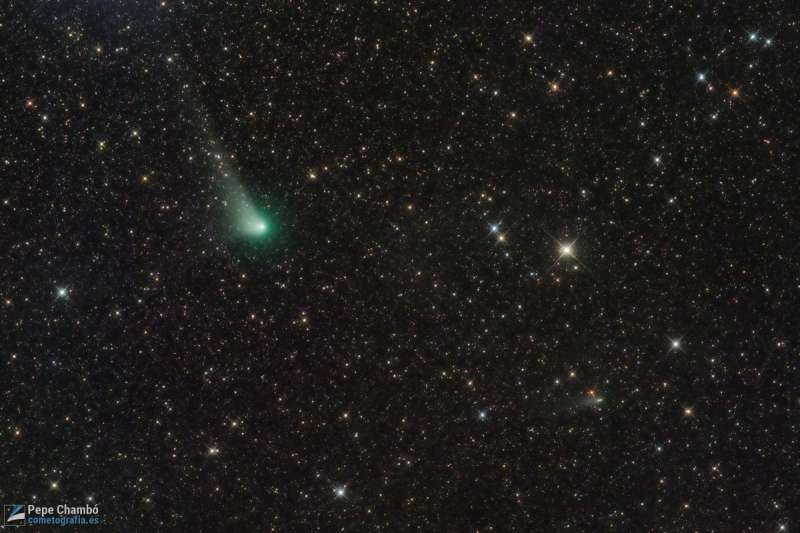Credit & Copyright: Jose J. Chambo
(Cometografia)
Explanation:
Heading for its closest approach to the Sun
or perihelion on December 20, comet
C/2017
K2 (PanSTARRS) remains a sight
for telescopic observers as it sweeps
through planet Earth's southern hemisphere skies.
First
time visitor
from the
remote Oort
cloud
this comet PanSTARRS sports
a greenish coma and whitish dust tail about half a
degree long at the upper left in a deep image from September 21.
It also shares the starry field of view toward the constellation
Scorpius with another comet,
73P/Schwassmann-Wachmann
3,
seen about 1 degree
below and right
of PanSTARRS.
Astronomers estimate that first time visitor comet
C/2017 K2 (PanSTARRS)
has been inbound from the Oort cloud for some 3 million years
along a hyperbolic orbit.
Schwassmann-Wachmann 3 is more familiar though.
The periodic comet loops through its own
elliptical orbit, from just beyond the orbit of Jupiter to the vicinity
of Earth's orbit, once every 5.4 years.
Just passing in the night, this comet PanSTARRS is about 20
light-minutes from Earth in the
September
21 image.
Seen to be disintegrating since 1995,
Schwassmann-Wachmann 3
was about 7.8 light-minutes away.
1999 2000 2001 2002 2003 2004 2005 2006 2007 2008 2009 2010 2011 2012 2013 2014 2015 2016 2017 2018 2019 2020 2021 2022 2023 2024 2025 |
Yanvar' Fevral' Mart Aprel' Mai Iyun' Iyul' Avgust Sentyabr' Oktyabr' Noyabr' Dekabr' |
NASA Web Site Statements, Warnings, and Disclaimers
NASA Official: Jay Norris. Specific rights apply.
A service of: LHEA at NASA / GSFC
& Michigan Tech. U.
|
Publikacii s klyuchevymi slovami:
comet - komety
Publikacii so slovami: comet - komety | |
Sm. takzhe:
Vse publikacii na tu zhe temu >> | |
